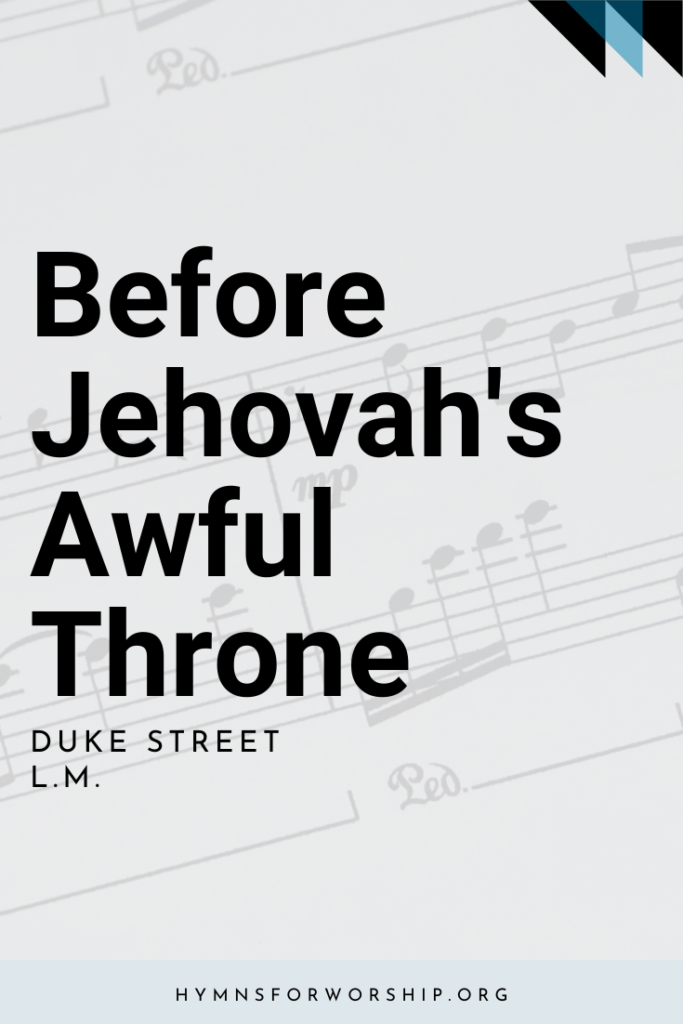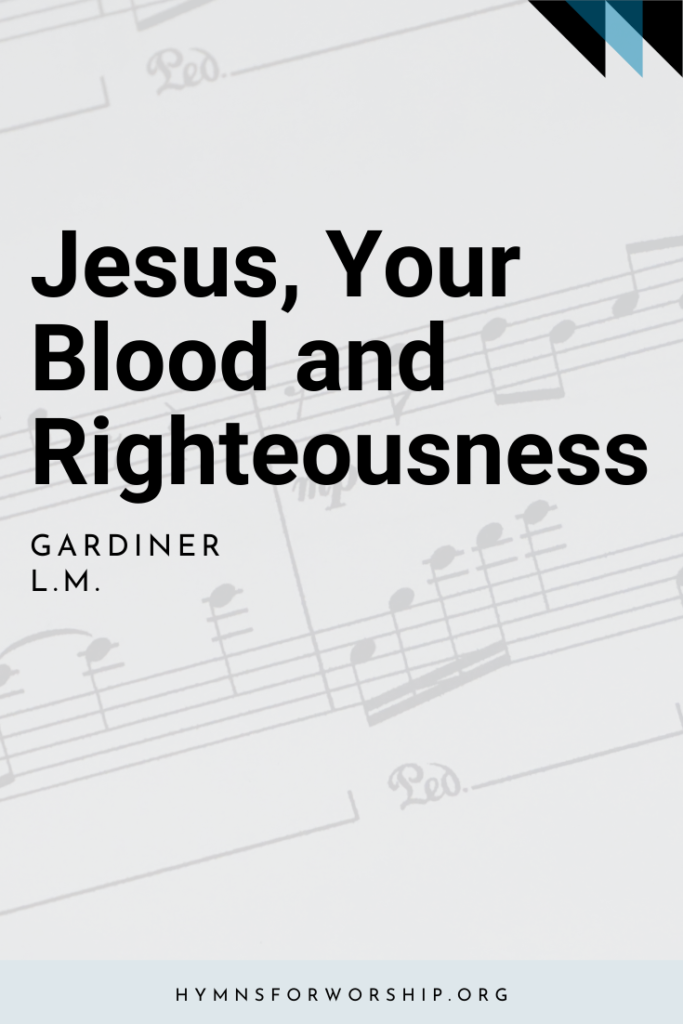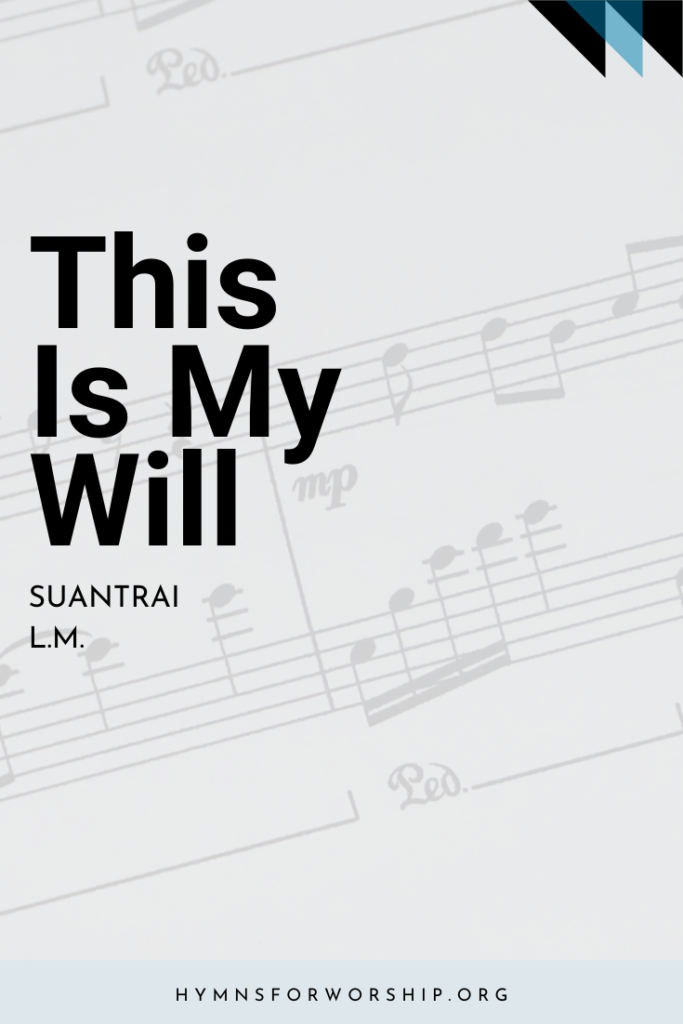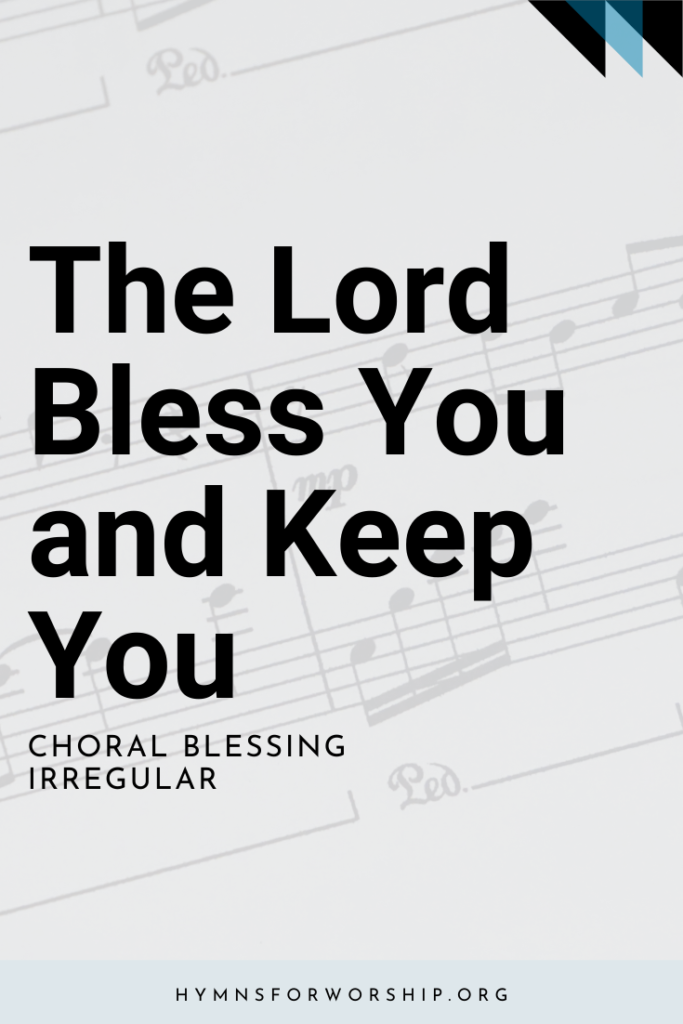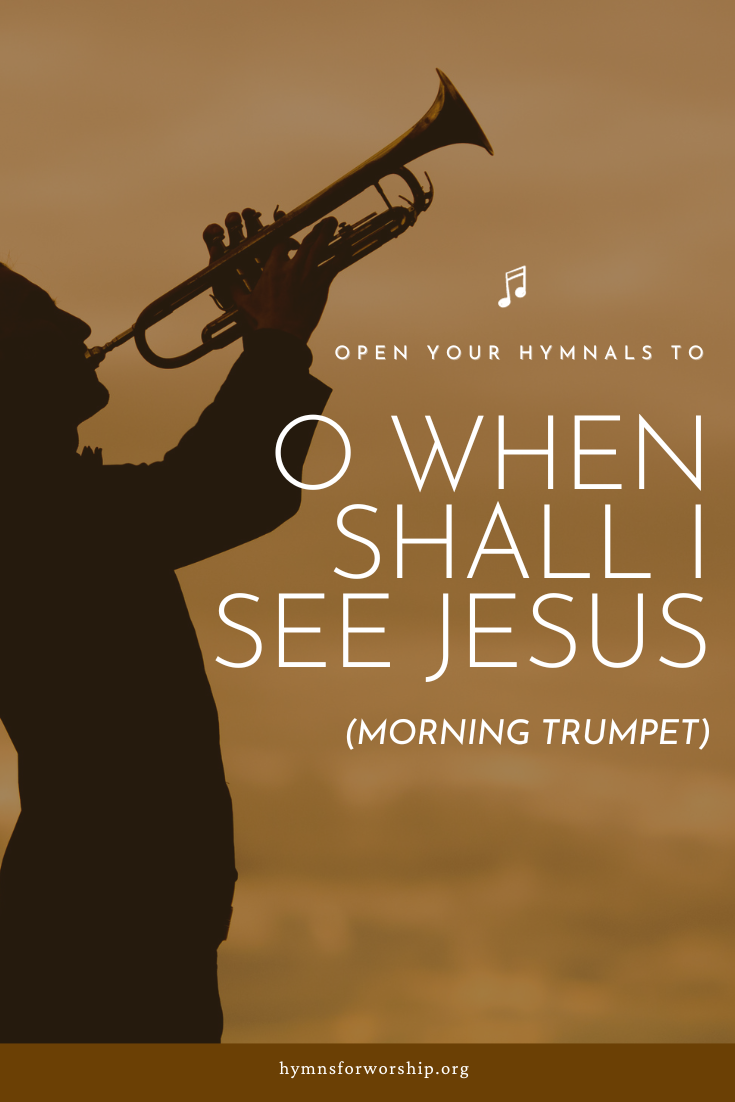
‘The most important hymnwriter among Baptists in America in the eighteenth century was John Leland.’ (Music and Richardson, 2008)
But John Leland, the original writer of ‘O When Shall I See Jesus’, was not only a hymn writer. He was also one of the leading Baptist ministers and evangelists during his time. One of the many things he was also known for was his belief in the religious rights of individuals and that the church and state should remain separate. He fought so much to the level that he was known to be a key player in the so-called Virginia experience, where James Madison and Thomas Jefferson became his strong allies.
Leland became a pivotal supporter of James Madison and helped win Baptist support for Madison’s election to the First Congress, where Madison drafted what would become the First Amendment of the Bill of Rights.
‘O When Shall I See Jesus’ is included in the SDA Hymnal, among the Early Advent section. This hymn is an example of the great alteration many hymn texts usually go through. Wordings were changed heavily to be able to fit the composer’s tune. Suffice it to say, this hymn remains popular and is still included in 21st century hymnals. Many living composers today like Ken Berg, Mark Hayes, Lloyd Larson and Mack Wilberg still find it compelling to make anthem arrangements of this hymn.
A lost cause
John Leland was born in Grafton, Massachusetts on May 14, 1754. In the book, The Writings of the Late Elder John Leland by L.F. Greene (1845) Leland’s early recollections of himself included a time when he was three years old and a preacher was invited to their home to baptize him and his siblings. He was so terrified of the idea that he ran as fast down a little hill and fell on his nose. His maid caught up to him and hurriedly scrubbed the blood off his face. At that young age, he felt that baptism was totally something forced on him.
By five years old, he can already read the Bible and was proficient in other branches of learning. But his teachers deemed his knowledge somehow useless because of his ill manners. Kicked out of school, his father resorted to apprenticing him to whoever was willing to take him in. A minister and a doctor offered their services but that didn’t pan out because Leland was more interested in becoming a lawyer.
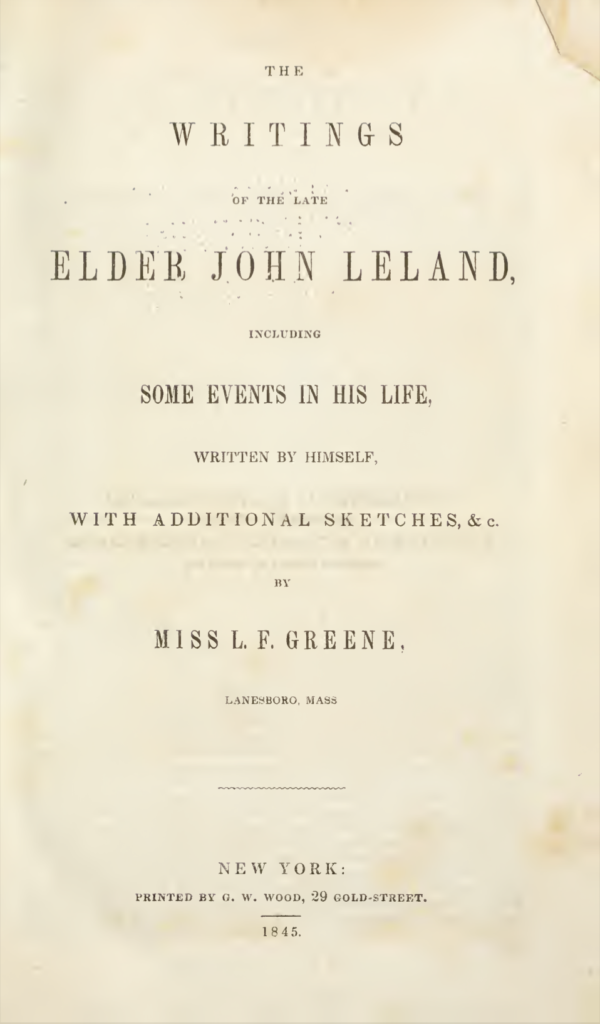

So he just hang out with his father who had no home library to educate him. But one book his father had, and that was the Bible. Leland wrote, “I was fond of reading, the Bible was my best companion.” He continued to write that as he read the Bible, he felt so horrible for all the terrible things he had done, yet somehow the horror (or conscience) was not enough to reform him. He felt something had to be done for him or he is a lost cause.
A voice in the sky
In the summer of 1772, he was returning from one of his “frolicks or evening diversions”. Exactly what that is in the late 1700s, we don’t know, but he was walking and felt this strong conviction and swore he heard from the skies a voice that said — You are not about the work which you have got to do. From that moment, he felt there was something important that he needed to accomplish in his life.
In the days that followed, he noticed that all the charming things that used to attract him, all the pleasurable things that gave him diversions lost its sweetness. His appetite for fun changed and the things he used to enjoy, he now found repulsive.
One evening someone invited him to a party of some sorts and he decided to go on the basis of experimenting whether he would still enjoy it or not — to see if his tastes have really changed. At the party, he found everything to be disgusting. He made his way home and invited another guy if he’d be willing to leave the party as well. As they walked home together, he realized all he could talk to the guy about was God and religion!
After realizing that his tastes for worldly activities have changed, he heard about a visiting preacher — Elhanan Winchester, that was in Grafton, Masschusettes. Those who attended his meeting testified he was preaching about serious gospel truth. Leland was keen to hear his message and decided to go to his meetings. One evening, as the preacher made an altar call, he saw a familiar girl walking up and testifying about her conversion. This greatly surprised him because the girl was someone he went to many parties with.
He attended many more meetings by Winchester and many other preachers. The Holy Spirit worked a strong conviction in his heart that shortly after his 20th birthday, he finally got baptized.
Rise, believe, and be baptized
After Leland’s baptism, he still wasn’t sure what he would do with his life. His mother believed that he could be a preacher but he had so many doubts in his mind. Even though others thought he was good at preaching, he personally felt agitated by it. At one time, he felt that the verses he would quote in a sermon are provided by the Devil and not by Christ. It was pure mental torment.
He sent much time in prayer, agonizing over what the Lord would have him do. Finally he wrote,
“I finally surrendered, and devoted my time and talents to the work of the ministry, without any condition, evasion or mental reservation. In myself, I have seen a rustic youth — unacquainted with men, manners and books; without the smallest prospects, or even the thought of gain or applause, turn out a volunteer for Christ, to contest with all the powers of darkness. …nothing could have tempted me to engage in the work, until I was moved by the Holy Ghost.”
John leland
When he finally put himself in the work, he began preaching immediately, starting at the towns close to him.
Learn the hymn
Printables, piano accompaniment, hymn text and other tidbits are all available in this site.

In 1776, Leland got married and ordained, and started making his preaching rounds in Virginia and North Carolina. Being an organized person, he made records of how many people were baptized through his preaching efforts. He also wrote about the many circumstances how people approached him to be baptized. In his records, he wrote that he baptized about 130 souls from 1779-1780. Another 400 souls were baptized in 1787 to 1780. His record for January 14, 1825 is written this way:
“I have preached in four hundred and thirty-six meeting houses, thirty-seven courthouses, several capitols, many academies and school-houses; barns, tobacco houses and dwelling houses: and many hundreds of times on stages in the open air. Not the place, but the presence of Christ, and a right temper of mind, makes preaching solemnly easy and profitable. My congregations have consisted of from five hearers to ten thousand.“
John Leland
Leland would normally start a preaching session by singing a hymn. One day in particular, he composed a hymn in lieu of the baptisms they were doing that day. It was very cold day and it was just the perfect metaphor that inspired Leland to write:
Christians, if your hearts be warm,
Ice and snow can do no harm;
If by Jesus you are prized,
Rise, believe, and be baptized.
Jesus drank the gall for you,
Bore the Cross for sinners due;
Children prove your love to him,
Never fear the frozen stream.
Never shun the Saviour’s Cross,
All on earth is worthless dross;
If the Saviour’s love you feel,
Let the world behold your zeal.
O When Shall I See Jesus — the original
’This is among the most widely published of Leland’s hymns, maintaining a presence in hymnals throughout the 20th century as well as in anthem arrangements’ wrote Clark Kimberling, a contributing writer for The Canterbury Dictionary of Hymnology.
An early biographer of Leland, L.F. Greene (1845) wrote a list of 10 hymns that the minister wrote. It is worth noting though that this particular hymn is not in the list. He may have written it solely to be poetry, we don’t know, but these words have been attributed to Leland by many respected historians.
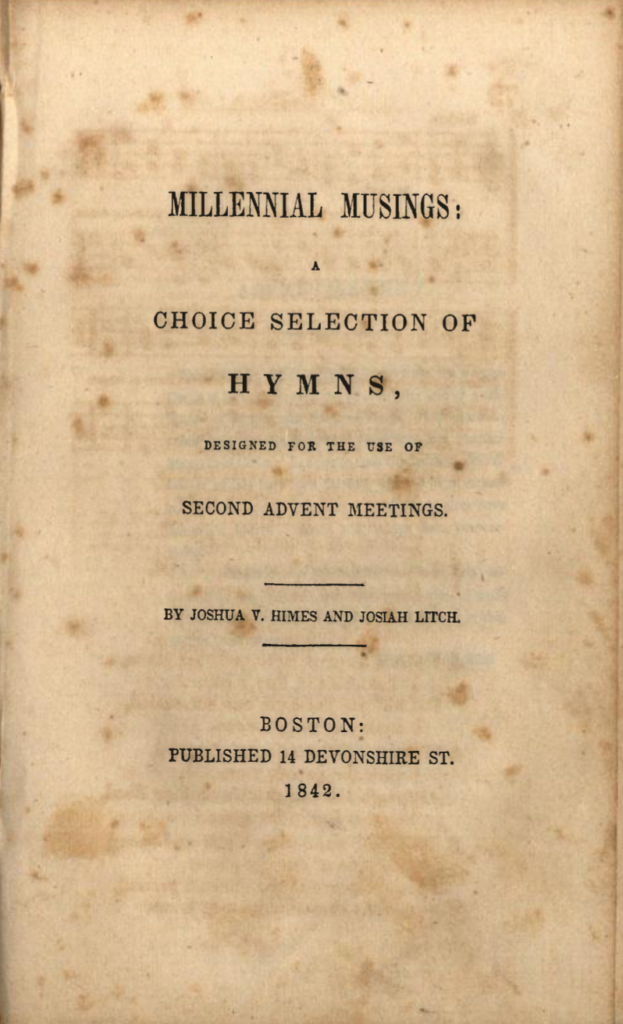

The earliest known publication was found in a rare book from 1793. A compilation called Hymns and Spiritual Songs, selected from Several Approved Authors, Recommended by the Baptist General Committee of Virginia by Eleazer Clay.
Below is a comparison of the originally published text and the altered text in the 1801 edition of the same hymnal.
ORIGINAL TEXT (1793 Clay’s Edition)
O WHEN shall I see Jesus,
And dwell with him above?
To drink the flowing fountains,
Of everlasting love.
When shall I be deliver’d,
From this vain world of sin?
And with my blessed Jesus
Drink endless pleasure in.
But now I am a soldier,
My Captain’s gone before,
He’s given me my orders,
And tells me not to fear;
And as he has prov’d faithful,
A crown of life he’ll give,
And all his val’ant sold’ers,
Eternal life shall live.
Through grace I am determin’d
To conquer tho’ I die;
And then away to Jesus,
On wings of Love I’ll fly;
Farewell to sin and sorrow,
I bid it all adieu;
And you, my friends, prove faithful,
And on your way pursue.
And when you meet with troubles,
And trials on the way,
Then cast your cares on Jesus,
And dont forget to pray;
Gird on the heav’nly armour,
Of faith, that works by love;
And when the war is ended,
You’ll reign with him above.
O do not be discourag’d,
For Jesus is your friend,
And if you lack for knowledge,
He’ll not refuse to lend,
Neither will he upbraid you,
Tho’ often you request,
He’ll give you grace to conquer,
And take you up to rest.
ALTERED TEXT (1801 Clay’s Edition)
O WHEN shall I see Jesus,
And reign with him above?
To drink the flowing fountains,
Of everlasting love.
When shall I be deliver’d,
From this vain world of sin?
And with my blessed Jesus
Drink endless pleasure in.
But now I am a soldier,
My Captain’s gone before,
He’s given me my orders,
And tells me not to fear;
And if I hold out faithful
A crown of life he’ll give,
And all his val’ant sold’ers,
Eternal life shall have.
Through grace I am determin’d
To conquer tho’ I die;
And then away to Jesus,
On wings of Love I’ll fly;
Farewell to sin and sorrow,
I bid it all adieu;
And you, my friends, prove faithful,
And on your way pursue.
And when you meet with troubles,
And trials on the way,
Then cast your cares on Jesus,
And dont forget to pray;
Gird on the heav’nly armour,
Of faith, and hope and love
And when your race is ended,
You’ll reign with him above.
O do not be discourag’d,
For Jesus is your friend,
And if you lack for knowledge,
He’ll not refuse to lend,
Neither will he upbraid you,
Tho’ often you request,
He’ll give you grace to conquer,
And take you up to rest.
The early Adventist hymnals, Millennial Musings Choice Selection of Hymns, Designed for the Use of Second Advent Meetings, compiled by Joshua V. Himes and Josiah Litch included this hymn as well. Published in 1842, they adapted the 1801 version. Until this guy, B.F. White came into the scene.
O When Shall I See Jesus — the heavily altered version
Benjamin Franklin White is known to be the main compiler of the famous The Sacred Harp, a hymnal that was based on shape notes, and also included harmony for singers. The first of its kind, it was also a book which had a lot to do with early music education in America as it has extensive number of pages dealing with rudiments of music. B.F. White was a singing school master, composer, writer, and at one point a major.
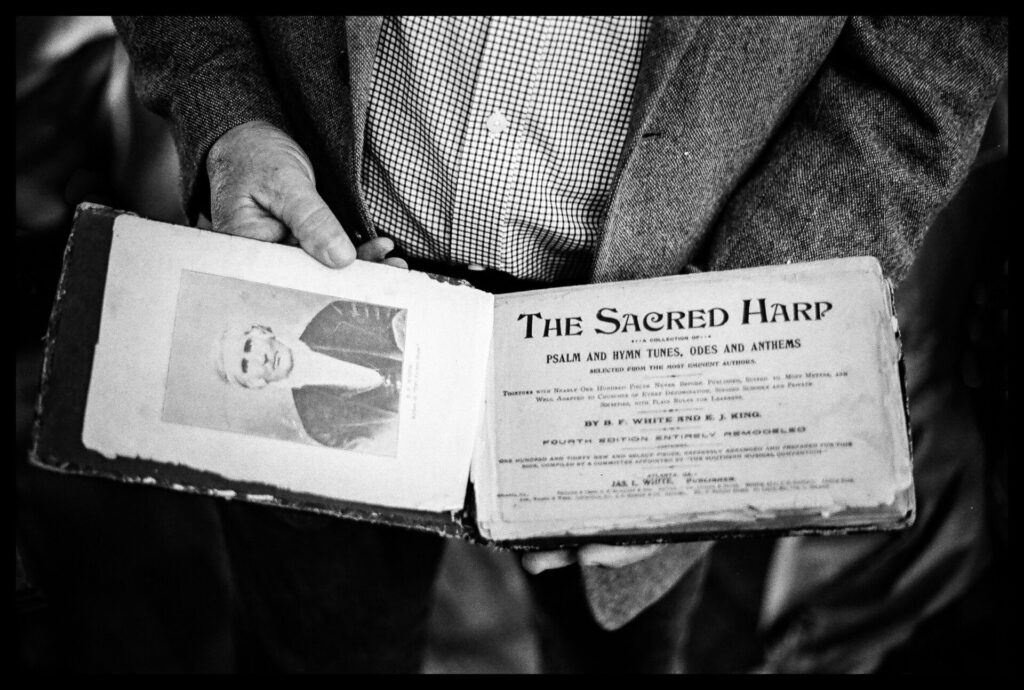
Unlike the common practice of writing music to serve the text, he did the opposite by altering the text heavily so it can fit his tune, THE MORNING TRUMPET. The original stanzas were broken apart, and he inserted the repetitive phrase, “And shall hear the trumpet sound in that morning” every two lines. He also added a chorus or refrain.
Up to this point, “O When Shall I Have Jesus” did not have any known tune officially published that can be associated with it. Clay’s version, nor the Millennial Musings was in a hymnal that did not have any notation. Anyone looking at these compilations will not have any idea as to what tune they sang the verses to until The Sacred Harp.
A note on the layout — the melody so to speak can be found on the 3rd line. The 1st, 2nd and 4th lines lends the harmony.
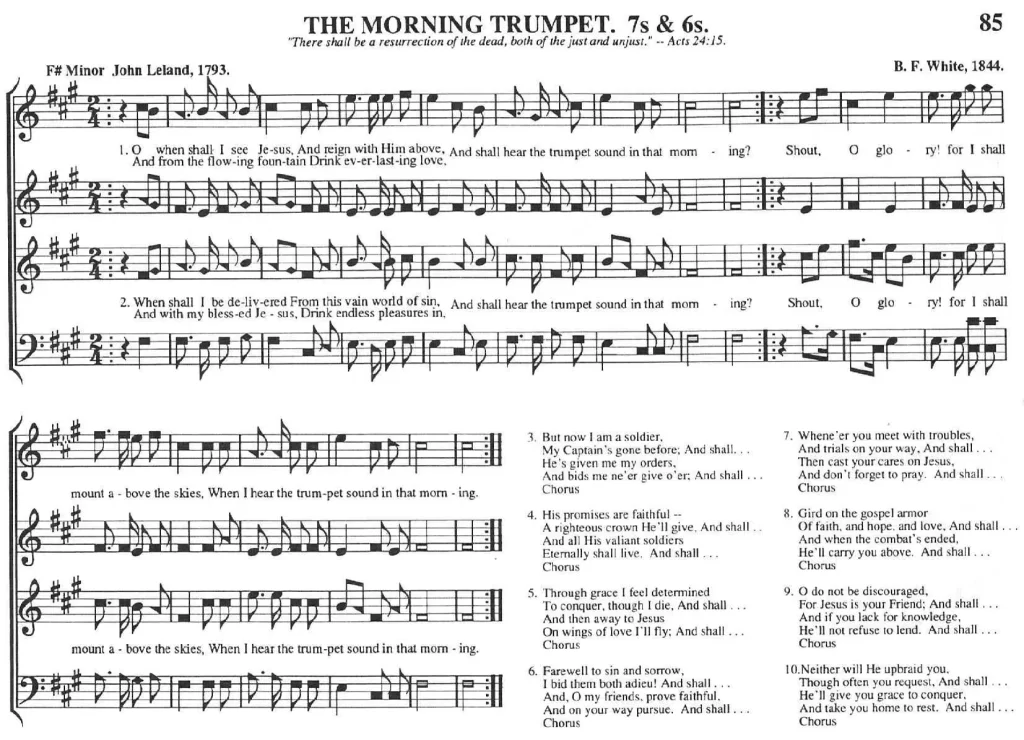
The current 20th century hymnals have adopted this version, and the SDA hymnal only uses 3 stanzas.
Interesting enough, this hymn was mistaken to be of Negro Spiritual in origins. In John Wesley Work II’s Folk Song of the American Negro, he wrote, “If there is in all the collections of folk song a pure melody, this is it. It is the song of faith. It was born in Georgia, near Atlanta. A slave was sold from his wife and it seemed that he would really die of a broken heart, but as he was being led away he said with a wail: “You may bury me in the East, You may bury me in the West, But I’ll hear the trumpet sound, In-a that morning”.’
Kimberling clarified the matter by writing, “In an effort to determine whether MORNING TRUMPET was composed by White, one must note that Work’s account seems to be primarily about the ‘song’—that is, the words—which were ‘said with a wail’ rather than sung; also, the words do not quite fit MORNING TRUMPET. It is not known if Work was aware that the melody had been published and claimed in 1844. As Work’s account is the only one cited in George Pullen Jackson’s identifications of possible folk-tune precedents for folk-hymns—in this case in White Spirituals in the Southern Uplands, pp. 254-5; it seems likely that MORNING TRUMPET was White’s own.”
A hymn steeped in biblical imagery
Given that Leland was a preacher, it would not be a surprise that the poem would be steeped with biblical imagery.

Stanza 1
‘Flowing fountains’, is a metaphor of refreshment (Joel 3: 18), wisdom (Proverbs 10: 11; 18: 4), and eschatological fulfillment (Revelation 7: 17) throughout scripture

Stanza 2-4
Stanzas 2–4 are an exposition on Ephesians 6: 11–18, reflecting on the struggle against the fight of ‘sin and sorrow’ by ‘Gird[ing] on the heav’nly armour’.

Final Stanza
The final stanza exhorts the ‘valiant soldiers’ (stanza 2) to continue the fight because the ‘Captain’ will ‘give you grace to conquer, / And take you up to rest’. The focus on grace and hope is a common theme in Baptist hymnody.
Then there’s the additional ‘trumpet’ metaphor that B.F. White inserted. This lends itself to 1 Corinthians 15:52 which says “In a moment, in the twinkling of an eye, at the last trump: for the trumpet shall sound, and the dead shall be raised incorruptible, and we shall be changed.” This, combined with the urgency of the music perfectly matched the military feel of the text and its eschatological thrust as well.
Personally, I think that the hymn attracted the pioneers because they can relate to the question Leland posed, “O when shall I see Jesus?” To the Millerites, that question was not just a question that can be answered with, ‘oh maybe someday who knows?’ They were bent on knowing the exact date, because their knowledge was informed with prophecy.
When they finally determined the date, they became concerned with seriously searching their hearts to see if they have really girded themselves with faith, hope and love. Many sold their properties, left their jobs, their fields and gave their all their energies towards evangelism.
Even with B.F White’s altered version, the SDA can still relate to the urgency of the the trumpet sound because it resonates with the urgency of our message, of our belief that Christ is coming very very soon!
“In this connection my mind reverted to the activity of the Advent believers in 1843 and 1844. At that time there was much house-to-house visitation, and untiring efforts were made to warn the people of the things that are spoken of in God’s Word. We should be putting forth even greater effort than was put forth by those who proclaimed the first angel’s message so faithfully. We are rapidly approaching the end of this earth’s history; and as we realize that Jesus is indeed coming soon, we shall be aroused to labor as never before. We are bidden to sound an alarm to the people. And in our own lives we are to show forth the power of truth and righteousness. The world is soon to meet the great Lawgiver over His broken law. Those only who turn from transgression to obedience can hope for pardon and peace.”
Ellen White, Counsels to the Church 355.2
RESOURCES:
GREENE, L. F., The Writings of the Late John Leland, Including Some Events in His Life, Written by Himself, with Additional Sketches, &c. (New York: G. W. Wood, 1845; reprinted, New York: Arno Press & The New York Times, 1969). Available online: https://ia804700.us.archive.org/20/items/writingsoflateel00lela/writingsoflateel00lela.pdf
KIMBERLING, CLARK. “B. F. White.” The Canterbury Dictionary of Hymnology. Canterbury Press, accessed October 6, 2023, http://www.hymnology.co.uk/b/b-f-white.
KIMBERLING, CLARK. “John Leland.” The Canterbury Dictionary of Hymnology. Canterbury Press, accessed October 6, 2023, http://www.hymnology.co.uk/j/john-leland.
KIMBERLING, CLARK. “O when shall I see Jesus.” The Canterbury Dictionary of Hymnology. Canterbury Press, accessed October 6, 2023, http://www.hymnology.co.uk/o/o-when-shall-i-see-jesus.

